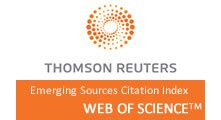Secondary Teachers’ Knowledge Structures for Measures of Center, Spread & Shape of Distribution Supporting their Statistical Reasoning
Abstract
Recent standards reform documents across the globe have called for statistical literacy by the end of high school. Thus, it is important for teachers to develop a deep understanding of the content. Despite the relatively thick literature base connecting students’ content knowledge and reasoning, research on these connections among practicing teachers is in critical need. Our study contributes to this lack of research by examining the knowledge structures and statistical reasoning—and possible ways knowledge structures supported reasoning—of a stratified purposeful sample of nine middle and secondary mathematics teachers as they responded to released items from the Levels of Conceptual Understanding in Statistics (LOCUS) assessment during two 60–90 minute task-based clinical interviews. Knowledge structures were categorized as compatible-connected, incompatible-connected, and incompatible-disconnected. Teachers with less incompatible knowledge elements in their structures engaged more frequently in reasoning coded as sound. However, teachers frequently engaged in both sound and unsound forms of reasoning on the same task item. Implications are offered for teacher education and future research.
Keywords
Full Text:
PDFReferences
Engledowl, C. & Tarr, J.E. (2020). Secondary teachers’ knowledge structures for measures of center, spread & shape of distribution supporting their statistical reasoning. International Journal of Education in Mathematics, Science and Technology (IJEMST), 8(2), 146-167.
DOI: https://doi.org/10.46328/ijemst.v8i2.810
Refbacks
- There are currently no refbacks.
Copyright (c) 2020 International Journal of Education in Mathematics, Science and Technology








This work is licensed under a Creative Commons Attribution-NonCommercial-ShareAlike 4.0 International License.
ISSN: 2147-611X (Online)
